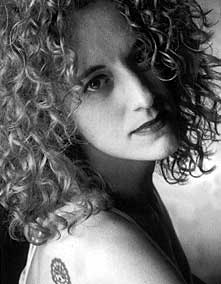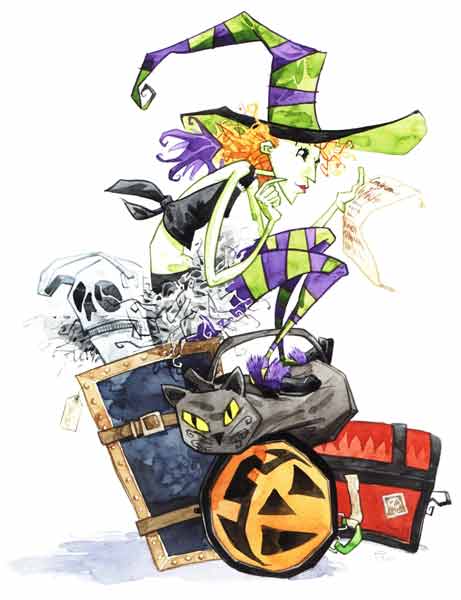While Hayao Miyazaki would remain my main inspiration throughout this project, I have also considered several other illustrator styles, and while I have already anchored myself to a water-colorish look for this project, I am pleased that I am able to find so many beautiful illustrations that are able to use the medium in so many unique ways:
Chihiro Iwasaki (1918-1974)
A Japanese artist and illustrator best known for her water-colored illustrations of flowers and children, the theme of which was "the happiness of children and peace". While the majority of her works were done with water colors, she had also worked on some japanese calligraphy and oil paintings. Kenji Miyazawa and Hans Christian Andersen were two of her favorite artists and have been a huge influence on her work.
Before the publication of "Totto-Chan: The Little Girl at the Window", separate episodes appeared serially in the monthly magazine "Wakai Josei" (Translated as Young Women) in 1981. During the two years of the serial publication, Tetsuko (Author of the book), repeatedly visited the Chihiro Art Museum and selected Chihiro's artworks to match each episode in her non-fiction story.
As a homage, I wish to stay somewhat close to the style of lightly penciled (If not scribbly) lines and messy watercolors that she uses in most of her illustrations, I also really like the unique coloring style she uses for her illustrations by painting really minimally detailed but nonetheless vibrant backgrounds to allow the characters to stand out more, or by painting very few (And really tiny) details on the character and leaving more major parts untouched (Though I have mistaken's Totto-Chan's hair for some sort of weird headgear whenever I looked at the cover in the past).
Hayao MiyazakiChihiro Iwasaki (1918-1974)
Before the publication of "Totto-Chan: The Little Girl at the Window", separate episodes appeared serially in the monthly magazine "Wakai Josei" (Translated as Young Women) in 1981. During the two years of the serial publication, Tetsuko (Author of the book), repeatedly visited the Chihiro Art Museum and selected Chihiro's artworks to match each episode in her non-fiction story.
As a homage, I wish to stay somewhat close to the style of lightly penciled (If not scribbly) lines and messy watercolors that she uses in most of her illustrations, I also really like the unique coloring style she uses for her illustrations by painting really minimally detailed but nonetheless vibrant backgrounds to allow the characters to stand out more, or by painting very few (And really tiny) details on the character and leaving more major parts untouched (Though I have mistaken's Totto-Chan's hair for some sort of weird headgear whenever I looked at the cover in the past).
 |
| I always found the hair designs for her characters quite interesting, not very often does she actually color it in. |
 |
| Really unique background design that is so simple yet so effective. |
 |
| This one seems a bit more traditional than her other works but again I love the use of a more limited color palette. |
 |
| I actually stink pretty badly when it comes to handling watercolors and so of course this will be of great aid to me when it comes to that aspect, I also do like the bits of stippling pencil shading on the character's clothing. |
 |
| Concept stuff, but I really like the idea of not fully coloring everything and leaving the area surrounding the main subject untouched. |
 |
| I think his water color works give off the exact atmosphere I am hoping to go for with my title animation, it's dreamy, vibrant and just perfect. |
An English illustrator, cartoonist, graphic novelist and author, he is best known for his story "The Snowman" (Which has been adapted into a cartoon and stage show) and the heartbreaking (REALLY heartbreaking) graphic novel "When the Wind Blows" (Which was also later on made into an animated film), though then again, Briggs actually has a pretty bleak outlook on things than he normally lets on with his adorable drawings…
But, that's not what we are discussing about here today so let's just move on…
You could say his art style is a lot more realistic as compared to that of the other illustrators I have chosen thus far (I mean look at that anatomy, those hands and feet, I have seen many children illustrators take the easy way out, especially since accurate details never truly matter in children books), but again, there is a charm to his own children illustrations much like Iwasaki's (Which is why none of us probably expected "When the Wind Blows" to turn out the way it would when we first read it, or watched it).
 |
| "Shackleton's Epic Voyage" A book aimed at young readers but will also appeal to adults as well. |
 |
| The coloring style for "The Snowman" has a wonderfully soft look to it. |
Jill Thompson
 |
| Hey pretty lady~ |
 |
| Jill has done quite a few of these illustrations based on various scenes drawn by other artists throughout the series, not to be bias, but most of the time they look a lot better to me than the original art drawn in the comics. |
 |
| Oh Delirium, my on and off again muse... |
Obviously I could also take some inspiration from her more cartoony pieces when designing the characters' body shapes and facial features to make them differ more from one another, especially for the street musicians whom I believe will have the craziest designs in the otherwise quaint little world of Totto-Chan (Autobiography remember? Though then again it's always been said that "Truth is stranger than fiction"…. pft!)




No comments:
Post a Comment